Iron is a very important nutrient for your baby's growth and development. Here is exactly what you need to know about iron for babies, including when they need it, how much, and the best iron-rich foods for baby led weaning.
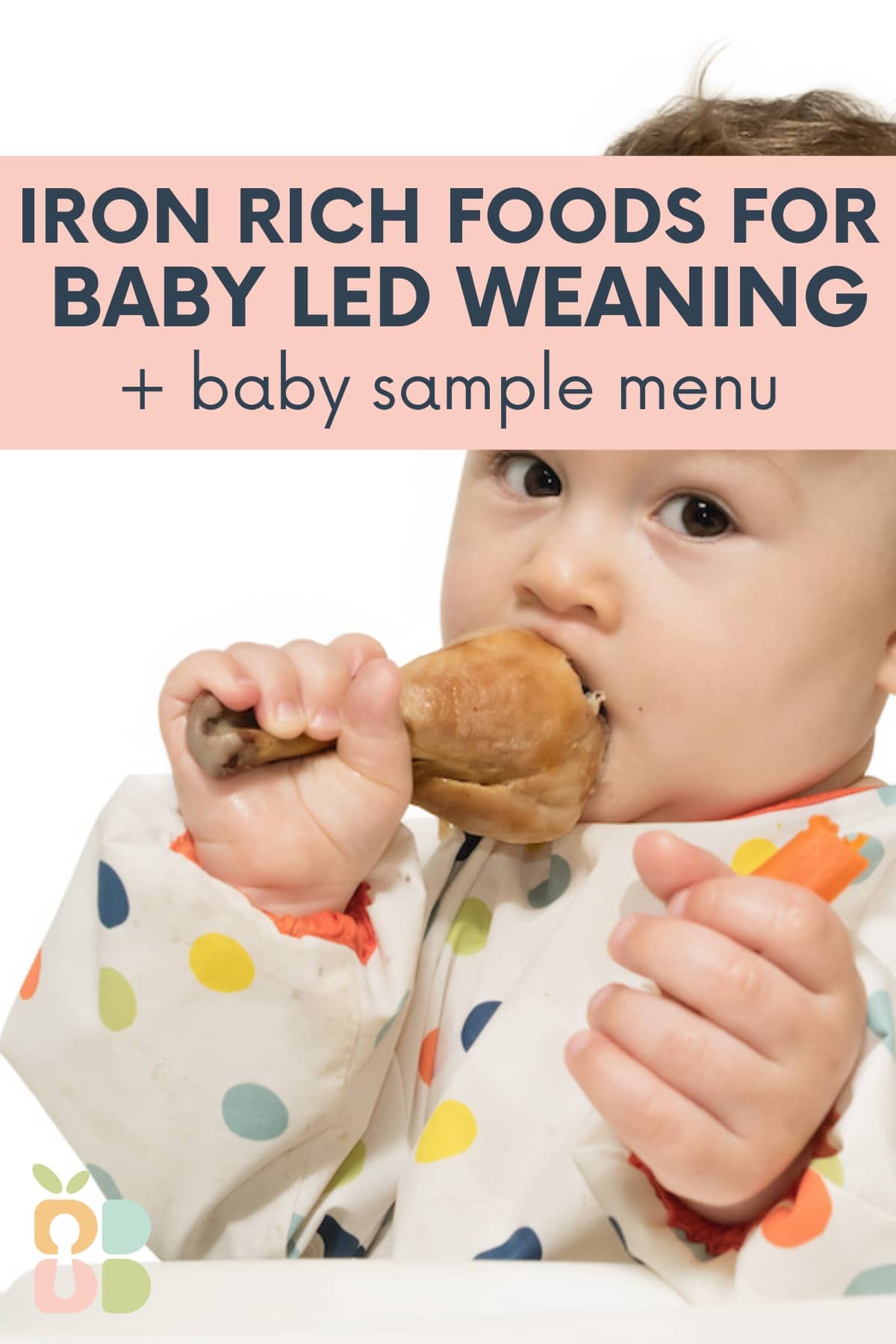
Starting solids for the first time can be such a confusing and overwhelming time for new parents. My mission is to help you feel less stressed and have fun with the process! That's why generally, I tell parents not to worry too much. However, there are a few key areas areas (like safety!) where it's good to pay close attention, especially if you're using a baby led weaning approach. One of these areas is iron - it's a super important nutrient you should make an effort to include in your baby's diet from the first little bites. Let's explore more!
Bonus: Grab your FREE printable download with easy steps for maximizing iron in BLW!
Why Is Iron Important For Babies?
Iron is a mineral that is key to the proper physical and mental development of babies. It is used to make hemoglobin, which carries oxygen via blood to all the cells in the body. Without enough iron, the very rapid development that happens in the early days can be irreversibly affected.
Iron deficiency (also called anemia) can lead to stunted growth, decreased cognitive performance, and behavior problems, which may lead to poor academic performance and short attention span later in life.
Signs of iron deficiency include pale skin, fatigue, cold hands and feet, poor growth, poor appetite, and frequent infections.
Where Do Babies Get Iron?
Babies build up iron stores in the womb during a mother's pregnancy. These stores will typically be enough for about the first 6 months of a baby's life if the baby was full term and mom had normal iron status. If the baby was born premature, iron stores will be lower. If the parents opted for delayed cord clamping, iron stores may be higher. (So if you haven't given birth yet, look into delayed cord clamping for higher iron stores!).
Around the age of 6 months, as iron stores start to deplete, baby will need to get iron from the diet. Breastmilk is not a good source of iron, though iron-fortified formula is a good source. In both cases, babies will need to get iron from food once solids are introduced around 6 months of age.
How Much Iron Do Babies Need?
In the US, the RDA for iron is 11 mg per day for infants 6-12 months of age. This is a complicated number, though. The RDA assumes that the infant is not eating any meat. The iron in meat sources is much more bioavailable (or usable to the body) than plant sources of iron. The WHO sets the RNI for iron at 9.3 mg per day assuming a baby who eats no meat, and at 6.2 mg using the bioavailability of meat-eaters. The UK uses an RNI of 7.8 mg per day. So short answer: it depends who you ask.
I think a good aiming point is about 7-8 mg of iron per day for 6-12 month olds if they eat meat. For vegetarian babies, a better target is probably 9-11 mg per day.
Can BLW Babies Get Enough Iron?
The main source of iron for babies traditionally weaned is iron-fortified rice cereal, which is usually skipped in BLW. But, baby led weaners can absolutely get enough iron in their diets! In fact, BLW babies typically eat meat if the family does, whereas traditionally weaned babies may not eat any for months after starting solids. As long as parents focus on offering iron-rich foods at each meal, there is no significant difference in the iron status of baby led weaning babies and those fed purees.
For vegetarian and vegan babies, it may be more challenging to get enough iron, but it can still be done as long as the parent does some planning and makes a significant effort at offering iron-rich foods, or supplements with rice cereal (more on that below).
Maximize Iron With This Simple Formula
Use this simple formula to maximize iron intake and absorption at each meal:
1 High Iron Food + 1 Vitamin C Food + 1 High Energy Food
Bonus: Grab your FREE printable download with simple steps for maximizing iron in BLW!
Iron-Rich Foods For Baby Led Weaning
Meat (especially red meat), eggs, and poultry are the best sources of iron. Bison and organ meats, such as liver, are particularly high. Iron-rich foods should be offered with foods containing vitamin C in order to help increase absorption. This is especially helpful for vegetarian sources.
- Baby beef burgers, meatballs, or meatloaf (try making them with bison!)
- Soft shredded beef or pork made in the slow cooker
- Juicy grilled steak, cut into finger-sized strips
- Beef or pork ribs (easy for baby to hold on to!)
- Chicken leg
- Boneless chicken thighs, cut into finger-sized strips
- Scrambled eggs or omelet strips
- Bean or lentil patties
- Fish or salmon cakes/patties
- Salmon or tuna salad with grated boiled egg
- Spread mashed beans, hummus, or nut butters on toast fingers
- Spread pureed meat on toast fingers
- Tofu strips sautéed or roasted
- Lightly smashed green peas or beans
- Prune puree - stir into oatmeal, yogurt, or muffin/pancake mix
- Seeds (pumpkin, sesame, hemp or flaxseeds) - Use to coat slippery foods, such as banana, kiwi, or avocado; or sprinkle on yogurt, oatmeal, or avocado toast fingers
- Wheat germ (used the same as seeds)
- Pitted black olives, sliced in half lengthwise
- Oatmeal cooked in dairy milk, breastmilk, soymilk, or canned coconut milk
Other Ways To Increase Iron
- As stated above, offer iron-rich foods with a source of vitamin C (found in many fruits and veggies!)
- Cook with cast-iron pans or grab a Lucky Iron Fish (this is helpful for foods like soups, stews, and sauces)
- Cook with garlic or onion - Cooking foods with allium (found in garlic and onions) can help increase iron absorption!
- Supplement with iron-fortified infant cereal. It can be used for half of the flour in baked goods like baby pancakes or muffins; used to coat slippery foods for better gripping; mixed half-and-half with oatmeal or cream of wheat; or just offered on a pre-loaded spoon. For those who want to stay away from rice cereal, you can get iron-fortified baby oatmeal or other grain blends.
High Iron Sample BLW Menu
Here is a sample menu for a 9 month old baby. Serving sizes will vary by your baby's age and hunger level, but this is just a reference!
| Food | Serving Size | Iron |
|---|---|---|
| Breakfast: pancakes made with half fortified baby oat cereal | 2 mini pancakes | 3 mg |
| prune puree | ½ pouch | 0.5 mg |
| Lunch: sliced avocado rolled in wheat germ | ¼ avocado + 1 tablespoon wheat germ | 0.6 mg |
| egg | 1 | 0.7 mg |
| toast fingers with butter | ¼ piece | 0.25 mg |
| Dinner: cooked chickpea pasta | ¼ cup | 0.8 mg |
| tomato sauce | 2 tbsp | 0.3 mg |
| bison meatball | 1 oz | 0.9 mg |
| green peas | ¼ cup | 0.5 mg |
| breastmilk throughout day | 24 oz | 0.3 mg |
| Total | 7.85 mg |
Should I Give An Iron Supplement To My Baby?
If your baby was born full-term or had delayed cord clamping, it is likely he or she won't need a supplement and can get enough iron from food. If baby was born premature or for some other reason has low iron status, your doctor will probably recommend an iron supplement until iron status is normal.
Be sure to read how to modify recipes for BLW and the safety guidelines for serving all foods to babies before beginning baby led weaning!

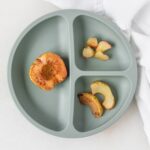
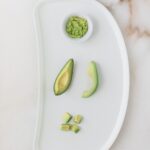
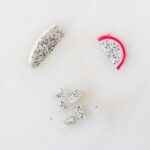

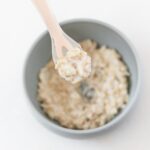



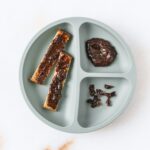
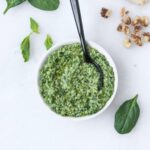

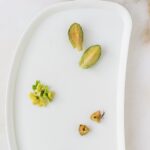
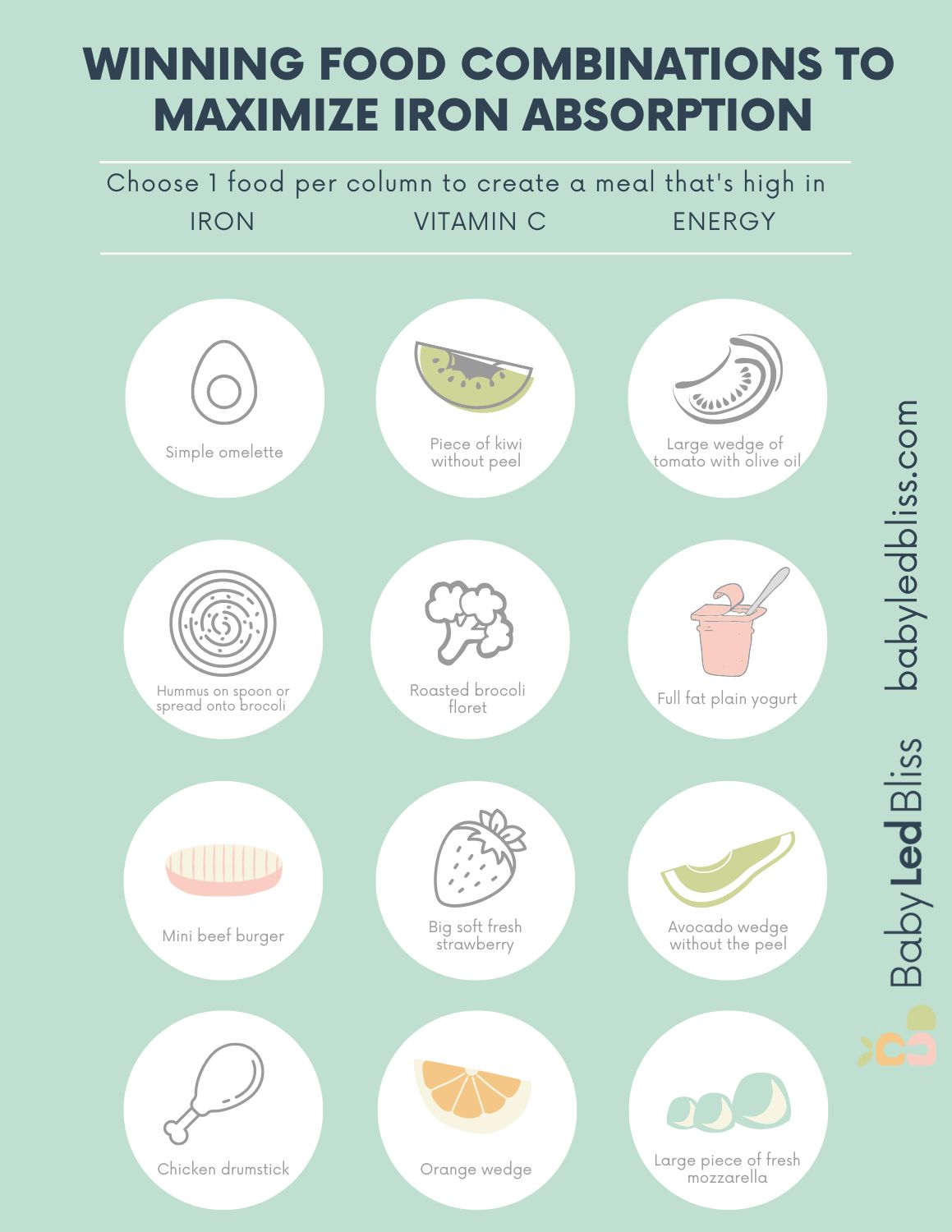




Leave a Reply